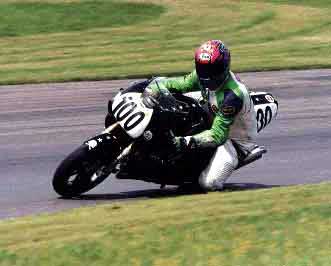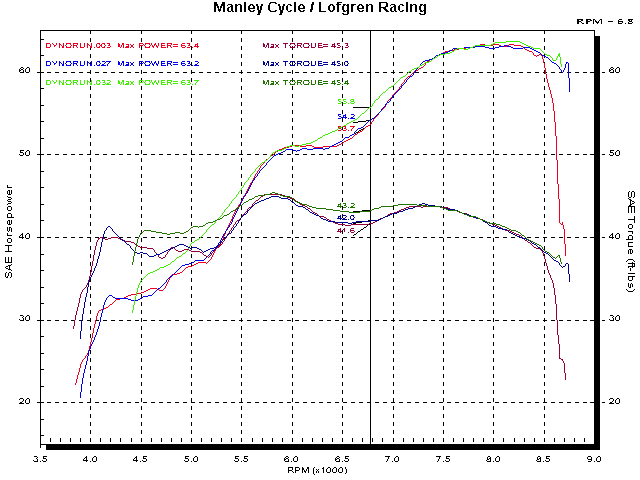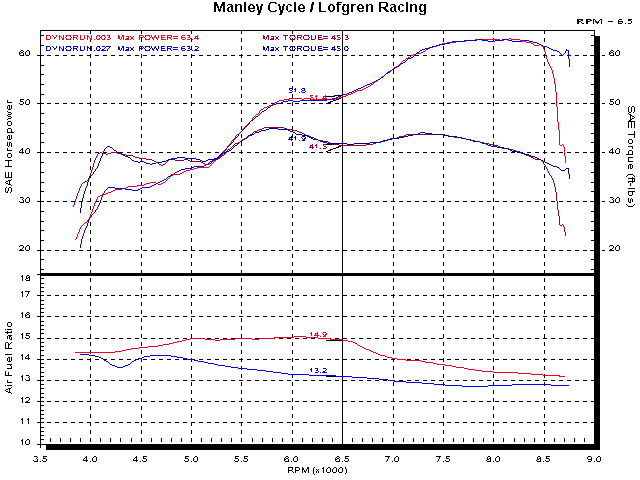Laverda 668 Ghost Notes
Back to: Manley Cycle Tech Reports
John Ryti bought his 668 Ghost to race the AHRMA Laverda series.
He made me do this! Below is a picture of it and him on the track.

If you'd like to contact John about any of the results, try this mailto:[email protected]
Sometime in the middle of summer he brought it over to deal with some of the fuel injection 'issues'.
I'd like to say that we found some interesting things, but testing always seems to bring out interesting things.
If you expect to gain peak power every time you go to the dyno, you'll be disappointed a lot.
First we tested the bike with the M4 pipe and the stock chip (Dynorun.003, red.)
Next we adjusted the chip to optimize the air/fuel ratio (Dynorun.027, blue.)
And finally we tested with the air-box top off (Dynorun.032.)

The first question that arises, might be 'why did it take 24 dyno runs to re-create run 003?
Since runs 003 and 027 are virtually identical, what's the point? The point is that there is actually a fairly wide range of air/fuel ratio that can produce the same power.
The two runs in question are re-produced below showing air/fuel ratio
.
Virtually, the only difference between the two is the air/fuel ratio. Also, this only represents the WOT line on the fuel map. It doesn't cover the rest of the map.
We changed a lot of the rest of the map as well as the WOT, and the drivability is much better. The WOT power run doesn't show that.
Just an observation here, but fuel injection doesn't seem to be as adversely affected by these kinds of air/fuel ratio differences as carburation. I think it's a matter of the quality (atomization) of the fuel delivered.
Finally, let's talk about the stock vs. open air-box part of these tests.
It looks as if the air-box resonance is tuned quite closely to that of the exhaust system and when the air-box top is removed, the negative tuning dips decrease a little, but the positive tuning points don't seem to increase, except at 8200 RPM.
It shows me that Laverda matched the tuning of the air-box quite nicely to the rest of the engine. The result is that even though the torque curve has greater undulations (than it does without an air-box), the peak power is very effectively maximized.
However, the smoother power curve does, also very effectively, improve performance.
The A/F ratio curve is pretty good for both runs, confirming that the mapping changes we performed for the open air-box version were fairly effective.
As long as one remembers that the WOT power graph isn't everything, and pays some attention to the part throttle air/fuel ratios, a very useable fuel map can be generated.
Enhancing your smoking experience is easy with an ash catcher. This essential accessory traps ash and debris, ensuring a smoother hit and cleaner bong. By incorporating an ash catcher into your setup, you not only improve flavor but also reduce the need for frequent cleaning. Additionally, ash catchers come in various designs, allowing you to personalize your bong while enjoying a more enjoyable and hassle-free smoking session.